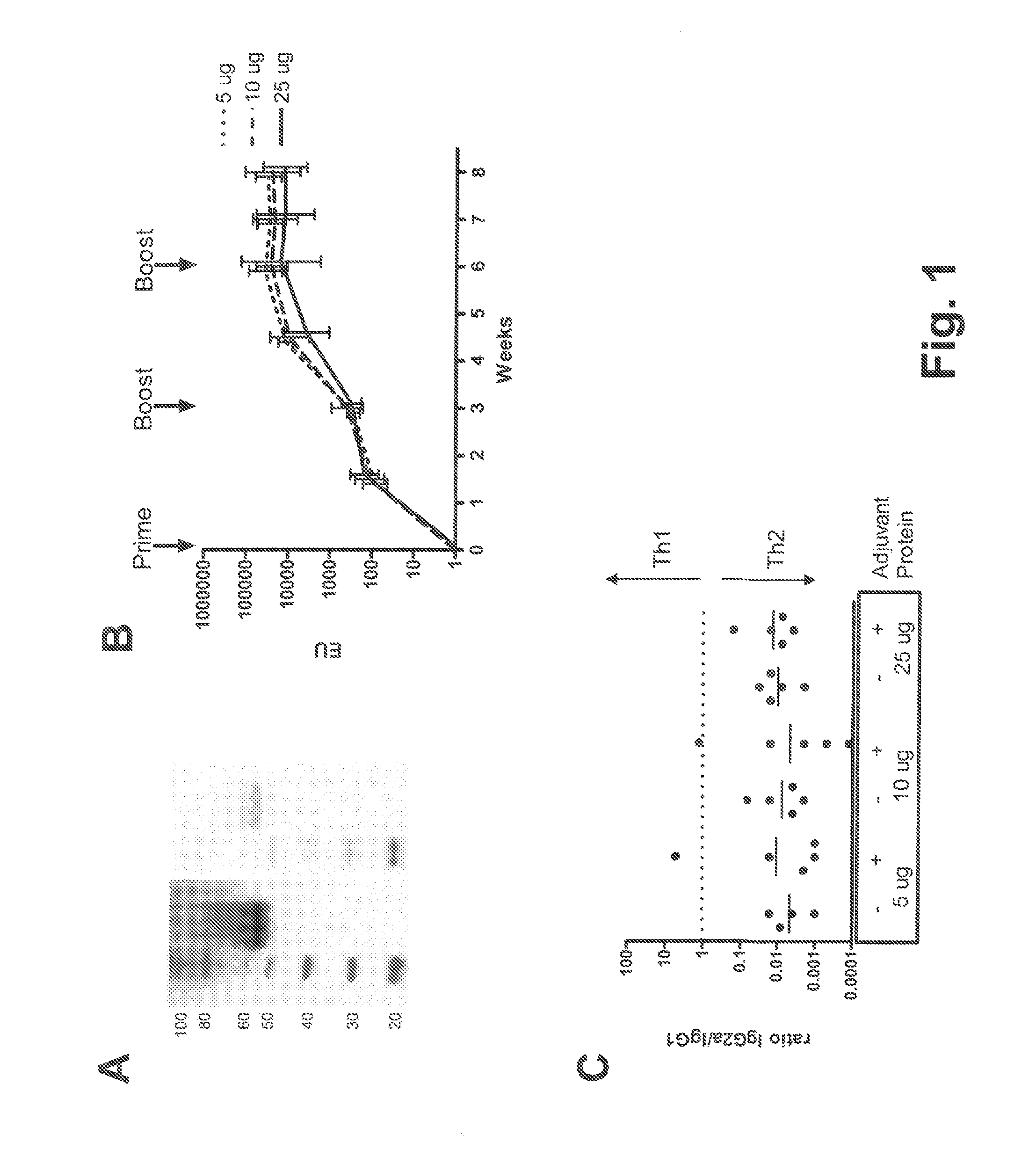Heterologous prime boost vaccination regimen against malaria
a vaccine regimen and anti-malaria technology, applied in the field of health care, can solve the problems of complex level and type of immune responses upon vaccination, insufficient predictability, and inability to efficiently induce long-lived protective immunity, and achieve poor t-cell response, high antibody response, and high potency in inducing high cs-specific humoral responses
- Summary
- Abstract
- Description
- Claims
- Application Information
AI Technical Summary
Benefits of technology
Problems solved by technology
Method used
Image
Examples
example 1
Studies in Mice
Materials and Methods
Vector and Protein Construction, Production and Purification
[0092]E1 / E3-deleted, replication-incompetent Ad26 and Ad35 vectors expressing the same P. falciparum CS gene were generated in E1-complementing PER.C6® cells and purified using CsCl gradients as previously described (e.g., Havenga et al., 2006; WO 2004 / 055187). Viral particles (vp) were quantified by high-performance liquid chromatography (HPLC). The P. falciparum CS gene is a synthetic, mammalian-codon optimized insert encoding a CS protein based on the EMBL protein sequence CAH04007, and truncated for the last 14 amino acids at the C-terminus. The N-terminus of this CS protein is a consensus assembled by alignment of various sequences present in the GenBank, while the repeat region and the C-terminus are based on the sequence of the 3D7 P. falciparum clone. The CS repeat region consisted of 27 NANP repeats, a cluster of three NVDP and one separate NVDP. CS protein of identical sequence ...
example 2
Study in Non-Human Primates
[0114]The tolerability and immunogenicity of the three-component prime-boost was evaluated in non-human primates. For this purpose, rhesus macaques (15 animals in total) were selected from an available animal pool based on following criteria: (i) physical exam demonstrating good health, (ii) no prior exposure to malaria or malaria antigens (no background in CS-specific ELISA and ELISPOT assays), and (iii) no detectable neutralizing antibodies against Ad35 or Ad26 in serum. Selected animals were stratified over three experimental treatment groups, five animals each, on the basis of body weight, age and gender. Eventually, all three treatment groups contained two male and three female individuals each. Animals were socially housed throughout the study.
[0115]Animals were vaccinated at weeks 0, 4 and 8 by intramuscular injection under sedation with adjuvant-formulated or rAd-vectored circumsporozoite (CS) protein from P. falciparum (Pf). CS protein was formula...
PUM
| Property | Measurement | Unit |
|---|---|---|
| diameter | aaaaa | aaaaa |
| pH | aaaaa | aaaaa |
| time points | aaaaa | aaaaa |
Abstract
Description
Claims
Application Information
 Login to View More
Login to View More - R&D
- Intellectual Property
- Life Sciences
- Materials
- Tech Scout
- Unparalleled Data Quality
- Higher Quality Content
- 60% Fewer Hallucinations
Browse by: Latest US Patents, China's latest patents, Technical Efficacy Thesaurus, Application Domain, Technology Topic, Popular Technical Reports.
© 2025 PatSnap. All rights reserved.Legal|Privacy policy|Modern Slavery Act Transparency Statement|Sitemap|About US| Contact US: help@patsnap.com



